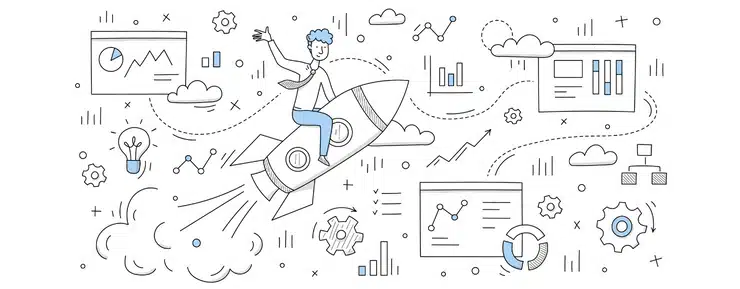6 Examples of Predictive Analytics: A Basic Guide

Introduction
Data is one of the biggest and most important driving forces of our time. From news to business to medicine to politics, data is a crucial factor in almost all fields. What was once known as business intelligence has now metamorphosed into predictive analysis. While the business intelligence predictive analytics use similar concepts, business intelligence looks backwards, towards the past, while predictive analysis, like the name suggests, looks at the future.
What is PA? How do you Define Predictive Analysis?
Predictive analytics meaning is the use of the various aspects of data science to make predictions about future events or actions. With the help of data mining, statistics, modelling, deep learning, machine learning and artificial intelligence, we can now make fairly accurate predictions regarding patterns, risks, and opportunities.
What is an Example of Predictive Analytics?
Predictive analysis is applied depending on the sector and industry. What works for one industry will not necessarily be helpful for another. Here are some real life examples of predictive analytics.
- Health
Google Flu Trends (GFT) was an early attempt to predict flu patterns in the population. However, the data collected was not ideal and thus the predictions were also incorrect. We are now seeing PA being used to predict epidemics, when a patient needs behavioural health care, and why patients need to be readmitted.
- Sports
One of the most interesting examples of companies using predictive analytics is Bing Predicts which is a system by Microsoft. It has consistently scored in the high 90s percentage of predicting U.S. House and Senate races, is in the 80 percentile American Idol, and was 100% accurate in the predictions of the 2014 World Cup. Bing Predicts uses statistics and social media sentiment when making its predictions.
- Risk Assessment
Insurance firms use PA to lessen their losses. Predictive model examples and real-world applications have helped them determine a successful combination of setting competitive prices, analysing and estimating future losses, catching fraudulent claims, and planning marketing campaigns.
- Financial modelling
One of the most common applications of A in finance is its use in credit ratings to determine if a loan should be approved. A good automated model will be able to predict if a loan is high-risk or not in a matter of a few minutes. PA is also applied in the optimization of business strategy, revenue generation, resource optimization, and sales generation.
- Retail
PA is most widely used in the retail industry. One of the best examples of predictive analytics in business is the recommendation list on Amazon’s website. It uses the data of customer behaviour and past transactions to determine which products will most likely result in a sale.
- Social Media
The sheer data available on social media is made simpler to comprehend with the use of examples of predictive analytics in marketing. Content posted by customers and potential buyers is combed through to inform business decisions.
Other real world examples of predictive analytics include:
- Internet of Things
- Monitoring aeroplanes
- Recommendation lists on Netflix
- Examples of predictive analytics in education include models used by edX, Coursera, and Udemy to match potential customers with the ‘right’ courses
- Predicting the safety of a mechanical part
- Staff planning for hotel chains
- Determining periods of high demand for public transportation
- Identifying homeowners who may be interested in selling
- Providing projected home values to buyers
- Forecasting the impact of variables on supply chains
Conclusion
If you are interested in making it big in the world of data and evolve as a Future Leader, you may consider our Integrated Program in Business Analytics, a 10-month online program, in collaboration with IIM Indore!
ALSO READ













